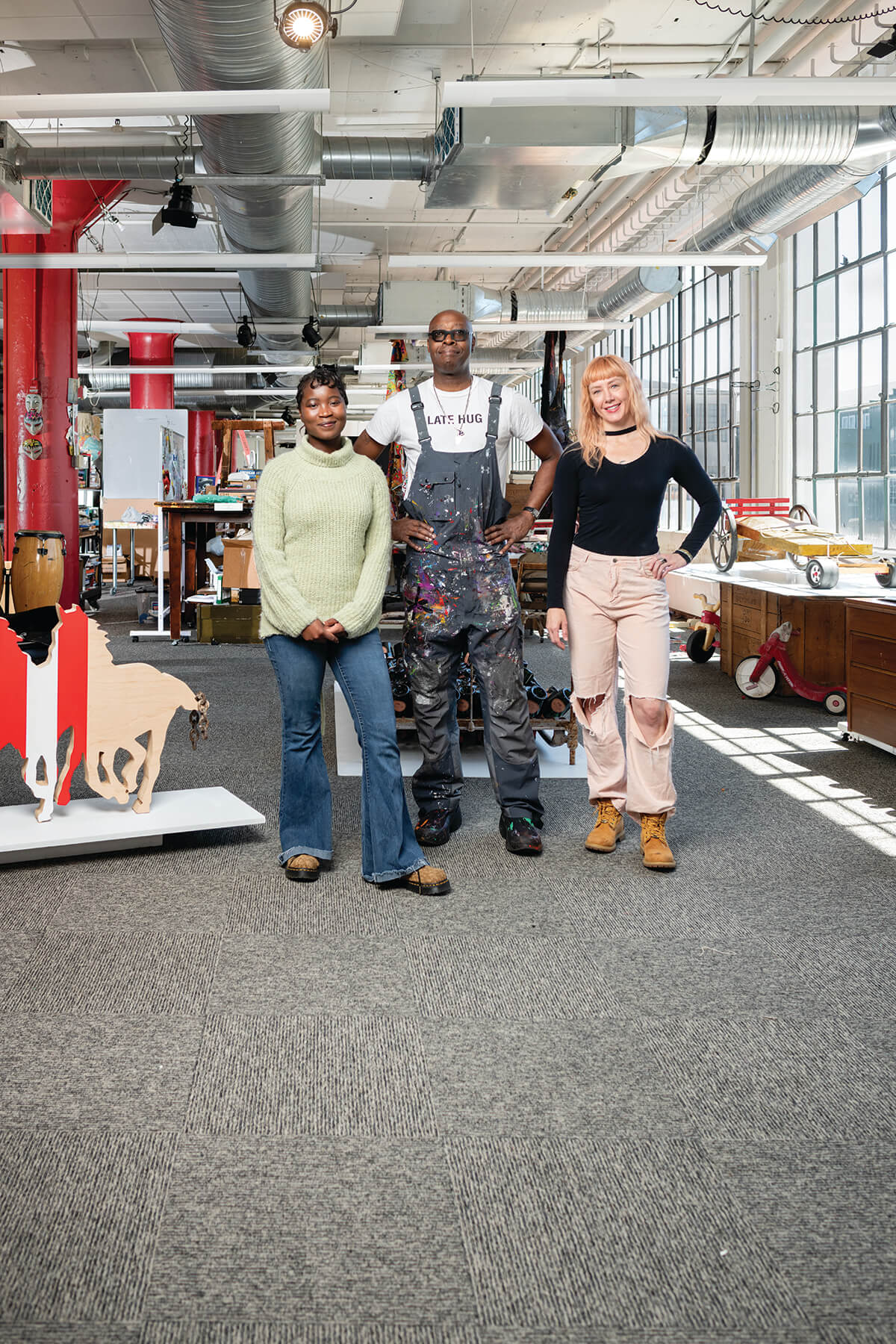Arts & Culture
Canton’s BLIFTD Creates a Shared Workspace for Artists
The American Can Company's new industrial-chic studio/work/event venue is operated by Baltimore-based artists Jeffrey Kent and Nicole Clark.

WeWork for artists seems like something of a no-brainer, but it requires lots of elements to come together. You need a big space, with tons of light (artists love light). You need a visionary team who can usher the space into existence. And you need some start-up cash to even get it off the ground.
Enter the American Can Company’s new BLIFTD—pronounced “be lifted”—a 15,000-square-foot, industrial-chic studio/work/event venue operated by Baltimore-based artists Jeffrey Kent and Nicole Clark, and supported by an investment from local developer Jeremy Landsman.
Folks in Baltimore’s art scene are already well acquainted with the striking Kent—bald, tall, and unspeakably cool—who is not only a wonderful artist, art dealer, and curator himself, but has long been a mentor to aspiring artists.
He recognized the genius of Amy Sherald before she was Amy Sherald, showcasing her early work in his old Howard Street space, Sub-Basement Studios. He also nurtured the talents of rising art-world star Jerrell Gibbs, who now has a studio at BLIFTD and will have his first hometown solo exhibit at the Baltimore Museum of Art next year.
It was Jeremy Landsman, of Reba Holdings development company, who reached out to Kent. Back in the day, Landsman used to hang out at Kent’s studio and loved the feeling of being around art and artists. So when he and his partners bought the Can Company last year, he knew he wanted to recreate that feel.
“Our goal was to bring culture to the project,” he says. “To bring good energy to the space.”
The second floor of the Can Company main building had most recently been used by tech companies Yahoo and OrderUp. Landsman essentially donated the space to Kent for the first year or so and asked him to cultivate a community art space. That was last October.
Shortly after that, Kent partnered with fellow artist Clark. Brainstorming with Landsman, they decided upon the shared studio model. Artists can choose long- or short-term spaces. There are smaller studios behind closed doors and an open space that feels a bit like a college art department. Everywhere, there are giant canvases, brushes, palettes, and paint. Sometimes there is loud music.
The space, which takes up the entire second floor, also has an option for non-artists to come do work, maybe just wanting to catch a creative vibe. And they will rent out the space for parties—as long as people promise to be careful around the art. Thanks to Yahoo’s former presence, there is even a DJ station and a movie screen.
Another key to BLIFTD’s success is manager Alexis Tyson, an artist and aspiring gallerist who is the most poised and accomplished 23-year-old you’ve ever met. While still going to school at UMBC, she works as an exhibition coordinator and project manager at The Peale museum, while also running the daily operations of BLIFTD.
“Someone’s going to steal her from us,” cracks Kent. Tyson’s own boldly colorful canvases are on easels in a corner of the studio.
Most of the artists at BLIFTD share Kent’s Basquiat-like style—thick paint, large canvases, unruly swirls of color. Clark says that there’s an informal “teaching aspect” to the place—with artists, especially Kent, sharing techniques, ideas, and even supplies.
Kent notes that this collaborative spirit is part of this town’s artistic DNA.
“This place isn’t dog-eat-dog at all,” he says. “That’s just the vibe of Baltimore.”
And now it’s the vibe at the Can Company, too. Landsman knows he’s running a for-profit, but truly thinks it’s good for business: “If you take care of the arts, the arts will take care of you.”